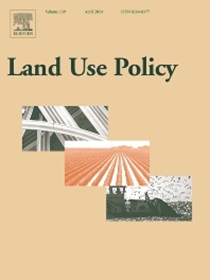Evolution of rural human-earth system in midstream of China’s Yellow River and its implications for land use planning: A study of Lingbao County, Henan Province
IF 6
1区 社会学
Q1 ENVIRONMENTAL STUDIES
引用次数: 0
Abstract
Human-Earth relations, particularly in rural areas of China, have been significantly transformed due to the unprecedented rate of urbanization and industrialization. Rural Human-Earth System (RHES) offers a comprehensive framework to better understand this changing relationship in rural areas. Exploring the differentiation and evolution of RHES, especially via systematic methodology, is crucial for category-based and region-specific practice of China’s rural revitalization strategies. Taking Lingbao, a representative region in the midstream of the Yellow River Basin, this study employed multi-source geographical data to identify the differentiation of RHES at the finer scale. Additionally, this research developed a random forest model to simulate the evolution and transformation of Lingbao’s RHES from 2000 to 2020. The results showed that Lingbao’s RHES could be classified into four subsystems–ecological (ECS), agricultural (AGS), rural-town (RTS), and urban-town (UTS)–exhibiting significant spatial heterogeneity. During the study period, the proportions of the ECS, RTS, and UTS increased by 2.98 %, 2.92 %, and 0.46 % respectively, whereas that of the AGS decreased by 6.36 %. Moreover, the proportion of AGS transforming to RTS increased consistently and became the dominant trajectory in 2010, surpassing the traditional AGS-to-ECS conversion pattern. The AGS served as a critical spatial carrier for RHES transformation, owing to its malleability and vulnerability. The evolution of these subsystems follows an “imbalance-coordination” cycle, driven by spatial optimization and self-organization processes. These findings help to design more targeted land use planning and to provide crucial insights for implementing differentiated rural revitalization strategies.
求助全文
约1分钟内获得全文
求助全文
来源期刊

Land Use Policy
ENVIRONMENTAL STUDIES-
CiteScore
13.70
自引率
8.50%
发文量
553
期刊介绍:
Land Use Policy is an international and interdisciplinary journal concerned with the social, economic, political, legal, physical and planning aspects of urban and rural land use.
Land Use Policy examines issues in geography, agriculture, forestry, irrigation, environmental conservation, housing, urban development and transport in both developed and developing countries through major refereed articles and shorter viewpoint pieces.
 求助内容:
求助内容: 应助结果提醒方式:
应助结果提醒方式:


